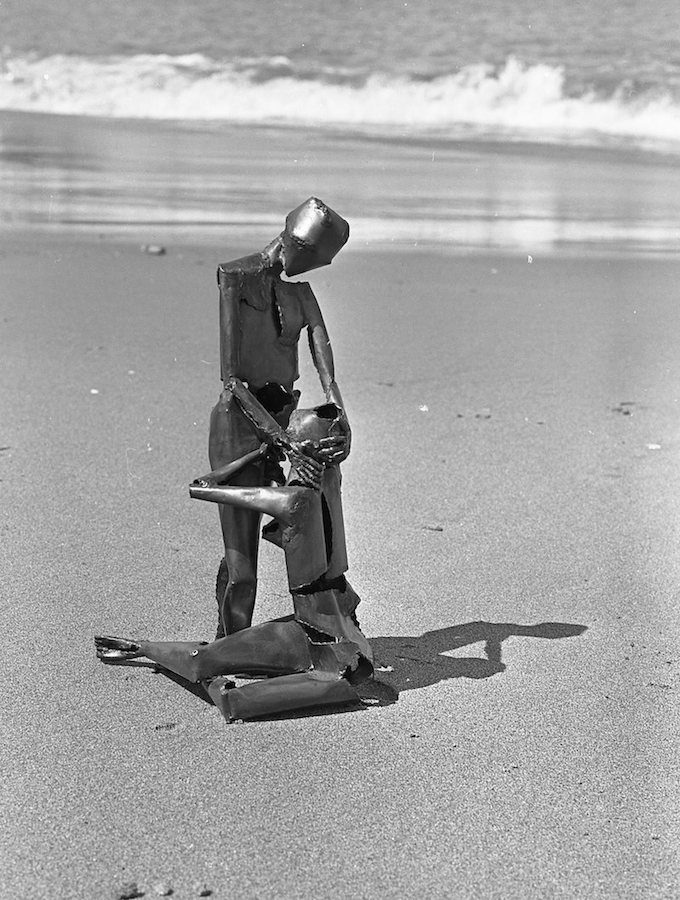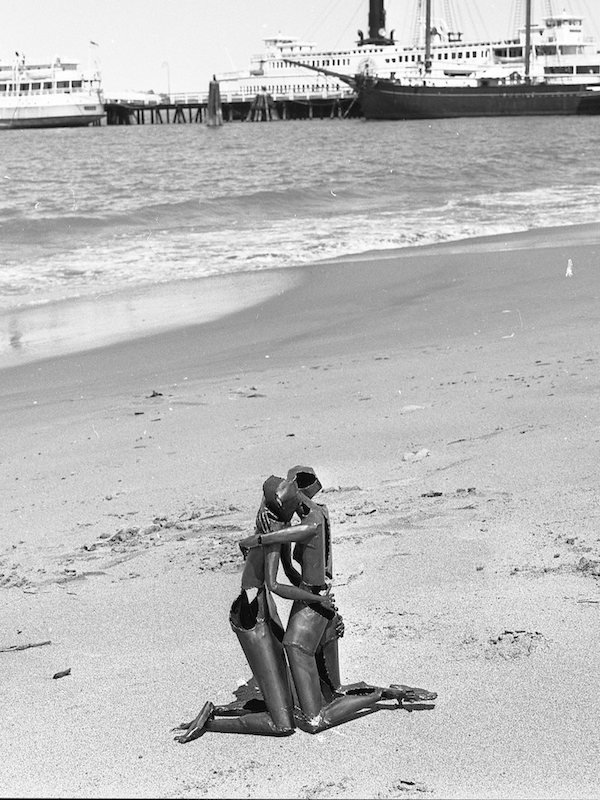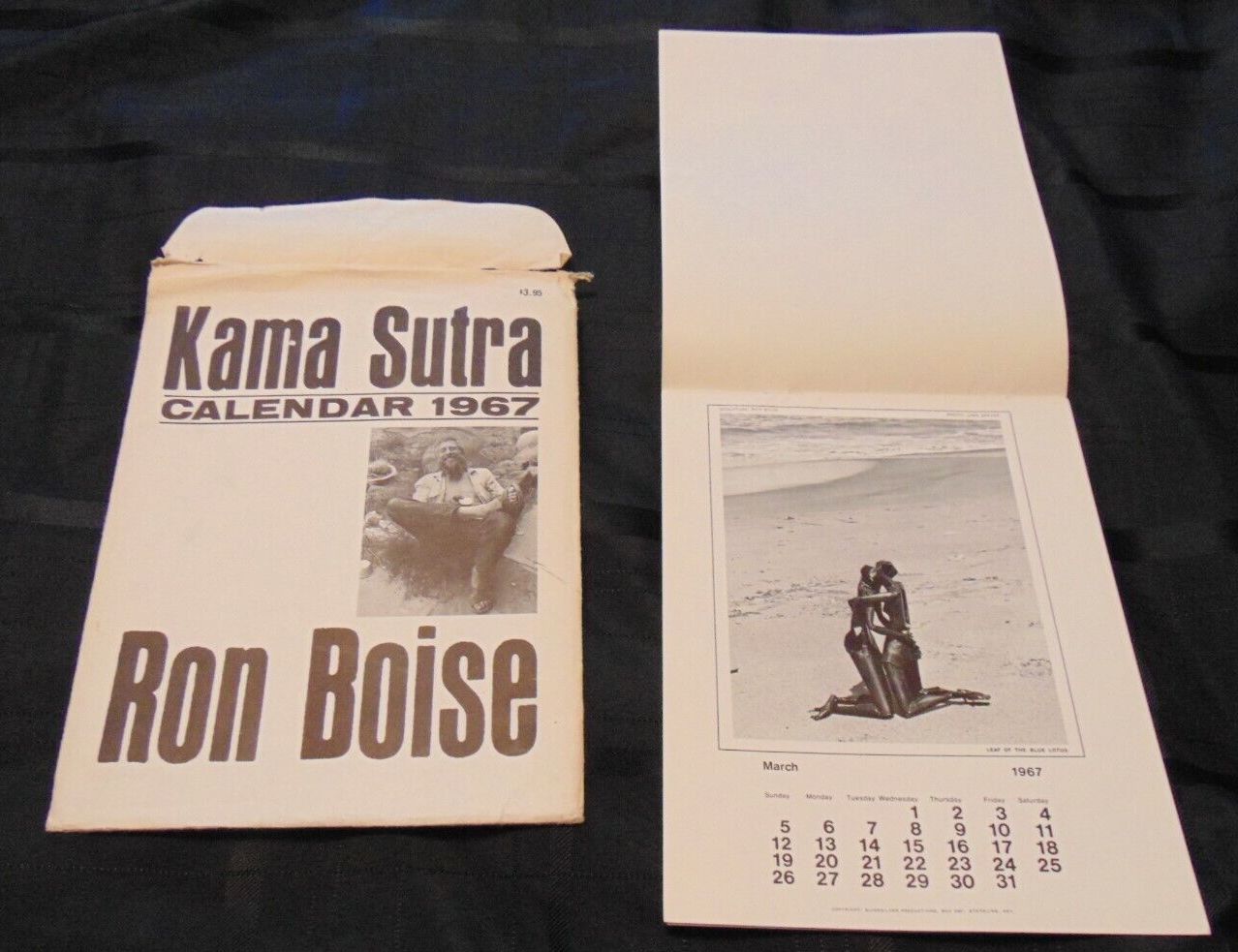In March 1964 San Francisco police raided Muldoon Elder’s Vorpal Gallery on North Beach and seized 11 sculptures by Ron Boise (1931-1966), an artist and one of writer Ken Kesey’s Merry Pranksters. There were 26 of Boise’s sculptures in the gallery’s show, including a number of life-size female nudes, busts and torsos, musical instruments, and 12 small pieces made from scrap metal (about 18 inches high) depicting sexual positions from the Kama Sutra.
The police charged Elder with offering lewd objects for sale. The matter would go before a jury. Should the sculptures be found obscene, California Penal Code 312 provided for their destruction.

The trial ran from June 23 to July 2, 1964. The defence called experts from the University of California-Berkeley, Mills College, the San Francisco Museum of Art and the San Francisco Art Institute, art historians Walter Horn and Catherine Caldwell, and Alan Watts, a respected scholar and philosopher of Eastern religion.
Watts spoke of the rich history of erotic art in western cultures and similar traditions in Indian, Japanese and African art. Examples of which could be seen in the world’s most prestigious museums, and in. books sold in San Francisco shops.
The prosecution called the Director of the de Young Museum, who decided that Boise’s work was art, just not “great art’ and thus unsuitable for exhibiting in any museum to which a families and children might visit.
The Director of the Palace of Legion of Honor called the sculptures “obscene” and “outside the limits of candor”. So, then, what of Rodin’s The Kiss, on display outside the museum he ran? Was the naked couple entwined in an embrace vulgar and pornographic? And wasn’t The Kiss inspired by a pair of doomed adulterers from Dante’s Inferno? Not at all, said the director. Rodin’s work showed “affection rather than sex”.
Boise told the court that there were only so many things two people in a single sculpture can do. “They can fight each other, ignore each other, or embrace,” he said. “What you see here is an ancient Buick I bought for $25. But I fell in love. So I sculpted people in love. It felt right. It was a gift to my beloved.”
After 6 hours of debate, the jury found that the sculptures were not obscene. The accused was set free. And the sculptures were returned to the Gallery.

Elder wrote about the trial in 2004:
My girlfriend Joy had called Roger Grimsby of Channel 7 News yesterday evening and told him that we were being harassed by the police for an art exhibition that had an amorous theme and perhaps he might want to send a cameraman down to the Vorpal Gallery so his viewers could see how tame the exhibition was and how silly it was to make such a big thing of it. Grimsby had told her sure, first thing in the morning.
..
The cameramen immediately start interviewing me as I step into the gallery, by this time with a little prepared speech to the effect of, “You see murder and horrible crime on television, smut on the news stands, the portrayal of violence accepted everywhere and yet they call it a crime to depict a simple act of tender love….”
…
Thank God the A.C.L.U. defended me at the two-week trial since in 1964 I hardly had a penny to my name to pay for a lawyer and I doubt if the public defender would have been as eloquent as Ephriam Margolin and Marshall Krause were in that courtroom. You’ll have to ask me about the trial sometime, it was a hoot.

Ron Boise Kama Sutra Calenear, via eBay
The publicity over the arrest created a buzz. During and after the trial, the Kama Sutra sculptures inspired people to feature them in calendars and on postcards. Hip Pocket Bookstore in Santa Cruz, California displayed one of the original sculptures over the front door. Another sculpture was installed on the roof of the Anchor Steam Beer Factory in San Francisco in full, and remained there until Fritz Maytag took over the company in 1965 and removed it.
Would you like to support Flashbak?
Please consider making a donation to our site. We don't want to rely on ads to bring you the best of visual culture. You can also support us by signing up to our Mailing List. And you can also follow us on Facebook, Instagram and Twitter. For great art and culture delivered to your door, visit our shop.



